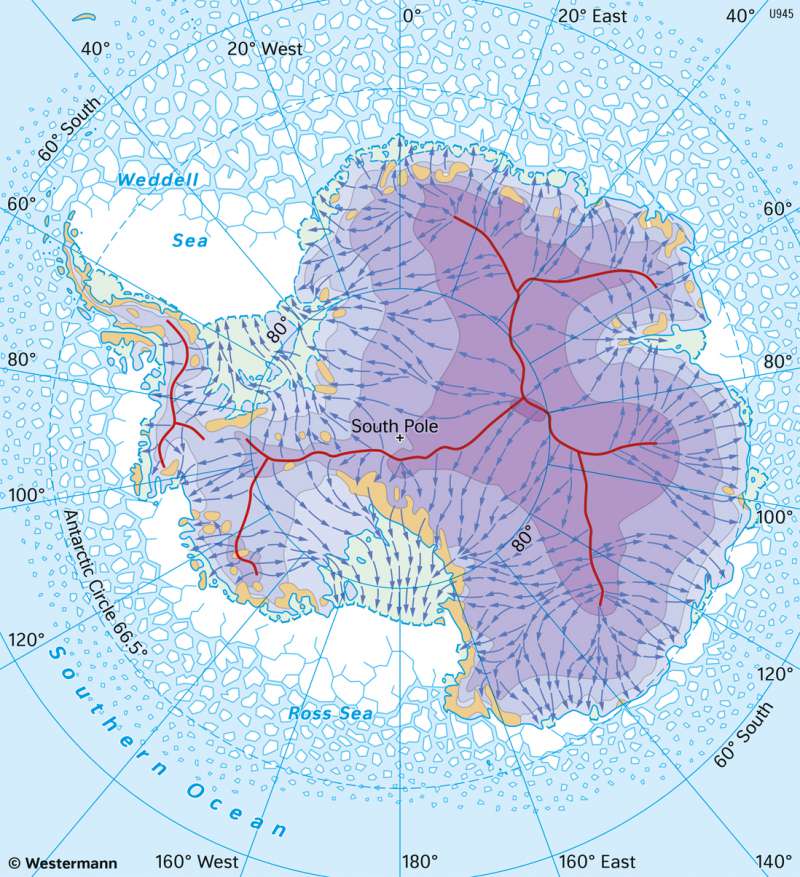Antarctic - Ice conditions
Human activities and environmental change
978-3-14-100890-6 | Page 200 | Ill. 2

Overview
All ecosystems as well as mankind depend directly or indirectly on the ocean and the cryosphere, the frozen components of the Earth’s system. Together with the oceans, the cryosphere is involved in the global exchange of water, energy and carbon. Glaciers and ice sheets cover about 10% of the Earth's land masses. The Antarctic ice sheet is the largest ice mass on our planet, covering 12.3 million km². The Antarctic continent is almost completely covered with ice, only some coastal areas are ice-free. With an average thickness of 2126 m and a maximum thickness of 4897 m in the Astrolabe subglacial basin, the total volume is about 26.5 million km³. This means that almost 90% of the Earth's ice is locked in the Antarctic ice sheet and the ice shelves it feeds, and thus also 70% of the global freshwater supply. The ice sheet is subject to constant processes of change. On the one hand, it grows from above through snowfall, on the other hand through freezing water from below.
The movement of the ice sheet
But the ice masses are not stable, they move across the continent. This is most clearly visible in the birth of icebergs. Knowledge about the movement of the Antarctic ice sheet results from thousands of radar measurements by satellites since 1996. In the areas where the ice is moving fastest, it moves a few kilometres a year. Such areas are found in glaciers (fastest: Pine Island and Thwaites) and in the ice shelf on the edge of the ice. The ice of West Antarctica is mainly composed of ice shelves or ice resting on rocks below sea level. This ice can melt particularly quickly due to warming of the sea ice. There are also channels of fast-flowing ice that reach far inland. Wide tributaries feed the glacial rivers. The ice sheet surrounding these tributaries moves slowly due to its own weight, only a few centimetres per year. The lowest rates of movement are found at the boundaries of the glacier areas. Glacial areas are generally delineated by the continent's ridges, which shape the direction of ice movement.
Knowledge about the movement of ice will help scientists deepen their understanding of how the ice is changing and the changes that will happen in the future as the climate warms. It will enable scientists to predict how much sea levels will rise due to ice melt in the coming decades. While increasing amounts of coastal ice are lost due to ocean warming, an enormous amount of ice is being tapped from the continent's interior at the same time.
Sources/Links:
Nasa (2011): First map of Antarctica’s moving ice.
https://earthobservatory.nasa.gov/images/51781/first-map-of-antarcticas-moving-ice
https://de.wikipedia.org/wiki/Antarktischer_Eisschild
Author: Sarah Franz




